As you may have heard, I write books for a living, and when you write books, getting negative reviews is just part of the game. Here are two mediocre reviews for Fearsome Creatures of the Lumberwoods I pulled off Amazon:
Of course, some people just genuinely don’t like my books
and that’s fine. It’s fine. That’s part of the game. And, honestly, in my case, when I get a stinging review, I remind myself I deserve it, because I personally am horribly cruel when I write reviews.
I tend to have emotional reactions to things like bad cinematography, bad graphic design, and especially bad books, by which I mean books I don’t like; and much like a petulant child I lash out at whatever that has hurt me. I also write positive reviews of books I like, mind you, but these fawning, love-drenched reviews are never as popular as my pure spleen.
Probably the mature thing would be to calm myself down and (subsequently) suppress my record of cruelty, but I have never once in my life calmed down. And so I have elected to put my cruelty on display for all to see. Please read below my savagings of others’ works, works they slaved over and loved as their own children, and share in either my or their pain.
Before we begin I should mention that this week, Christmas special, two of my books
a paranoid thriller about an asexual mathematician
and
a paranoid thriller about shapeshifting teens
are on a special 99¢ Kindle deal! Also, all my books (without exception) make great gifts, and if you write a review of one I will send you a free sketch on an index card to paste in your book (or frame). Some restrictions inevitably apply.
I mean, I hope the review you write isn’t like one of these below, but fair is fair.

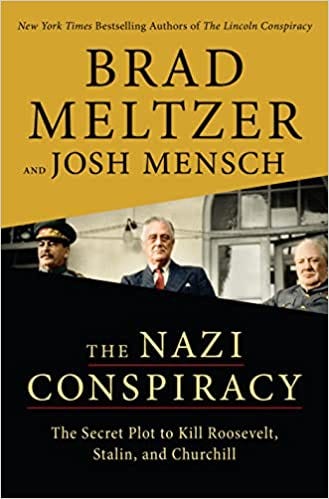
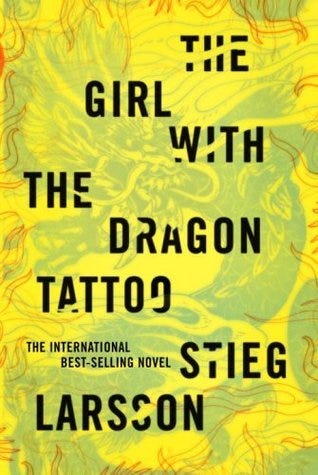

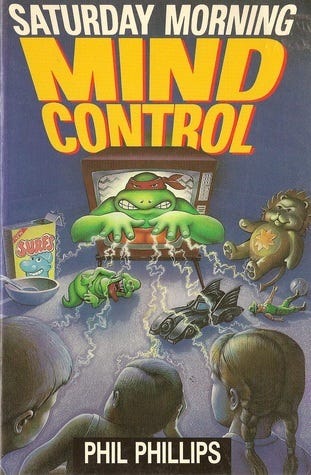
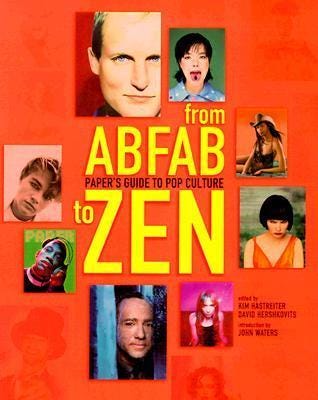
•1491: New Revelations of the Americas Before Columbus by Charles C. Mann
1491 (the book) is admittedly full of interesting tidbits, but whenever its author steps back to try to connect them into a larger picture, he inevitably trips over his own confusion. This flaw is so poisonous to the quality of the book, that I feel compelled to demonstrate said flaw by pulling a few examples from the first couple chapters and then assuring you, the prospective reader, that the entire book is like this. The entire book is this dumb, just a jumble of misguided passages between the facts, again and again, all sweaty attempts to blow minds without even bothering to set the charges.
Here, as an example and presented in its entirety, is a paragraph from 1491’s introduction:
“Advertisements still celebrate nomadic, ecologically pure Indians on horseback chasing bison in the Great Plains of North America, but at the time of Columbus the great majority of Native Americans could be found south of the Río Grande. They were not nomadic, but built up and lived in some of the world’s biggest and most opulent cities. Far from being dependent on big-game hunting, most Indians lived on farms. Others subsisted on fish and shellfish. As for the horses, they were from Europe; except for llamas in the Andes, the Western hemisphere had no beasts of burden. In other words, the Americas were immeasurably busier, more diverse, and more populous than researchers had previously imagined” (p. 17).
What are to make of this? There are a bunch of true facts that absolutely no one has disputed for centuries (the Indian population was much denser in the south; horses came from Europe; the opulent cities as testified by Cortes and Pizarro, etc.) followed by an “in other words” and a complete non sequitur. Although plains Indians hunted on horseback, other Indians at various times and various places did not; therefore “researchers” had “previously” been wrong.
“New revelations” the title promises us, and provides old ones; but then you get the feeling Mann will sacrifice anything to make a sale. “According to William I. Woods…the region could have supported as many as 400,000 inhabitants, at least in theory, making it one of the bigger population centers in the world” (p. 29). “Could have.” “As many as.” “In theory.” If my vague weaseling happens to be true, then the result just might be a startling fact! They don’t even let you get away with this kind of talk on Wikipedia.
Here’s another puzzler: “Every European and Asian culture since [Sumer], no matter how disparate in appearance, stands in Sumer’s shadow. Native Americans, who left Asia long before agriculture, missed out on the bounty. ‘They had to do everything on their own,’ Crosby said to me. Remarkably, they succeeded” (p. 19). Look, don’t tell Erich von Daniken, but Asia also had to do it on their own, because Asia had to spawn Sumer. Sumer had to do it on its own! Remarkably, Sumer succeeded. This is just silly!
This is from chapter two, on legends of the Inkas’ origin:
“In one of the oral tales recorded by the Spanish Jesuit Bernabé Cobo, the Inka originated with a family of four brothers and four sisters who left Lake Titicaca for reasons unknown and wandered until they came upon what would become the future Inka capital, Qosqo (Cusco, in Spanish). Cobo, who sighed over the ‘extreme ignorance and barbarity’ of the Indians, dismissed such stories as ‘ludicrous.’ Nonetheless, archaeological investigation has generally borne them out: the Inka seem indeed to have migrated to Qosqo from somewhere else, perhaps Lake Titicaca, around 1200 A.D” (p. 75).
Here’s the thing: The Inka origin myth does, in fact, have “ludicrous” components (e.g. the autochthonous birth of the eight siblings from a cave); it’s just that Mann left them out. Then he performs this remarkably clunky sleight-of-hand: Only an idiot (he jeers) would scoff at a myth that contains this germ of truth, that peoples often arrive where they are from somewhere else. “Perhaps Lake Titicaca,” Mann adds, keeping his fingers crossed; maybe more of the myth is true. Maybe the sun fashioned them in a cave; who knows?
Some people have griped that this book is politically one-sided, but I think they’re misreading it. The goal of Mann’s text is not to rehabilitate or celebrate the Indians for social justice purposes; he just wants to pretend he’s running around overturning conventional wisdom like so many buffet tables. “Cobo got it wrong,” he sings, just so he can pretend to have the marvelous riposte: turns out the myth is actually true, guys! But the myth is clearly not actually true. Parts of it may be true; certainly myths can contain vestiges of historical tradition; but there’s not enough evidence for that, even, so Mann throws in a “perhaps” and runs away, shouting, “Prove me wrong!”
As soon as I start to get excited, while reading 1491, by interesting facts about the Wari or the Amazon or something, Mann hops in, foot planted firmly in mouth, to make a bunch of sweeping, feebleminded guesses he immediately forgets are guesses. So much of this book is just silliness! Someone needs to edit Mann out of his own text so we can, at long last, read something not-stupid.
•The Nazi Conspiracy: The Secret Plot to Kill Roosevelt, Stalin, and Churchill by Brad Meltzer & Josh Mensch
This is opening paragraph of The Nazi Conspiracy’s prologue: “The president is hiding.” Not just the opening sentence, mind you (although it’s also that), but also the opening paragraph.
The opening paragraph of chapter one is: “The ships have been traveling—secretly—for ten days.” Of chapter three: “America tried so hard to stay out of the war.” Chapter six starts with a paragraph of two whole sentences (“War! Oahu bombed by Japanese planes.”) but one of those sentences is one word long, so make of that what you will.
Here’re a deadening list of some other Nazi Conspiracy opening paragraphs (paragraphs, mind you), chapter by chapter:
Chapter 7: News travels fast.
” 8: Someone has to tell the Führer.
” 9: He knows how to blend in.
” 10: The press conference was a complete surprise.
” 11: “Storm and Ruin.”
” 12: Nazi spy Franz Mayr has a new mission.
” 15: There was an actual game plan.
” 16: It’s no ordinary train.
” 17: They picked Wannsee, a locality on the outskirts of Berlin.
” 18: The champagne is flowing in Wannsee.
” 19: The weapons hit the ground with a thud.
” 21: He needs a lucky break.
” 22: He looks like an ordinary teenager on a bike.
” 24: It’s just a letter.
” 25: The cross-Channel attack.
” 26: No one can say that Franz Mayr isn’t ambitious.
” 27: He’s about to be face-to-face with “The Man of Steel.”
” 28: For a while, things had been looking up for Franz Mayr.
” 29: Roosevelt and Churchill had it wrong.
” 30: The President needs to mediate.
” 31: For the intelligence chief, spy craft is a passion.
” 32: Roosevelt needs Stalin back.
” 33: Otto Skorzeny, Captain of the Waffen-SS, is bored.
” 35: For months they’ve been hunting Nazis.
” 36: The war is moving fast and there are critical decisions to make.
” 37: For Captain Otto Skorzeny, the rest of the summer is a whirlwind.
” 38: There’s new hope for the summit.
” 39: The mountain face is coming at them fast.
” 45: It starts with music.
” 46: The information sometimes comes so fast, it’s hard to know what to do with it.
” 47: Franklin Roosevelt loves the ocean.
” 48: At first, it seems too good to be true.
” 49: There’s a live torpedo headed toward the ship.
” 51: Mike Reilly is on another plane.
” 53: It’s a one-of-a-kind opportunity.
” 54: Churchill doesn’t like what he sees.
” 56: Mike Reilly isn’t the only American making arrangements for tomorrow’s summit.
” 62: Churchill still has a cold.
” 63: It’s a sword.
” 64: The NKVD have the Nazis in their crosshairs.
” 67: President Roosevelt has been gone for more than a month.
” 70: A pistol and a cyanide pill.
” 72: He was still just a kid.
” 73: No one sees it coming
” 75: The president never gets to see the end.
I only listed one-sentence opening paragraphs, and only when the sentence was short enough that I didn’t get bored typing it. Rest assured that many or most of the paragraphs not listed are something like (chapter 52) “Mike Reilly braces for the worst. He’s not wrong.” Or (chapter 61) “There are six of them out there. They’ve got one wireless radio.”
Now, there’s nothing wrong, necessarily, with short sentences. There’s nothing wrong with short paragraphs, either, if you use them judiciously. It’s a strange default tic, though, a strange habit to return to again and again. Notice how ugly most of these sentences are; and yet each one is set alone, at the top of the page, as if to be admired for its jewel-like precision. Could anything be more vulgar?——It turns out the answer is yes.
So often the opening paragraph invokes something akin to a moment of suspense. “He knows how to blend in.” Who? “It’s no ordinary train.” What isn’t? The entire first chapter is a long, vaguely worded description of the movement of the Japanese fleet towards Pearl Harbor, only reluctantly acknowledging at the end what these vaguenesses were describing. Ships on the move! You were probably wondering where the ships were headed, dear reader!
There’s no actual suspense, though, because nothing is less inherently suspenseful than “ships you know nothing about are moving through the ocean!” Dunh dunh dunh! It’s a sign pointing towards suspense, halfheartedly inserted to ape the conventions of fiction under the assumption that readers will revolt if anyone admits for one moment they are not being merely entertained. And yet such half-hearted insertions make up nearly the whole book! The vulgar coyness of “The weapons hit the ground with a thud” or “He needs a lucky break” is all but unendurable. A workmanlike sentence such as “No one can say that Franz Mayr isn’t ambitious.” looks comparatively elegant.
And yet it gets worse. The leadenness of the prose can only be conveyed by example. Here are the opening three paragraphs of Chapter 9 (I put those ¶s in just to make it clear that these are, in fact, complete paragraphs, and I'm not reformatting prose as free verse poetry):
“Roosevelt and Churchill had it wrong.¶
“They thought Stalin would be disappointed that the cross-Channel attack into northern France would be delayed a full year. But Stalin isn’t disappointed.¶
“He’s furious.¶
“[Etc.…]”
Obviously this passage is extremely bad, but notice that it is also space-wasting. That’s three paragraphs and four sentences to say that R & C had underestimated S’s wrath. This treading-water approach is endemic to the book. As an exercise, see if any chapter in the book cannot be improved by being reduced to one midlength paragraph.
Sometimes The N.C. reminds me of a student desperately trying to reach an essay’s word count by writing in circles, and sometimes The N.C. reminds me of one of those episodes of 20/20 in which they only have ninety seconds of usable footage and so spend all their time hinting at the exciting thing they’re going to show you soon while doling out their sparse wares grudgingly.
Perhaps another example will make clear how much time is wasted in this book. Behold the opening four paragraphs of chapter 53:
“It’s a one-of-a-kind opportunity.¶
“For at least a few days, the three Allied leaders will be in the same city, the same room—sometimes eating at the same table. When they’re photographed together, it might even be in a public location.¶
“For Nazi Special Forces, there’ll never be a better chance to hurt them all at once.¶
“The only question is, how do you get close enough to do it?¶”
You’ll notice that this is a fine, if inelegant and verbose, summary of the book, and I would scarcely be complaining if it had appeared on the jacket flap. But this is page 249! Everything in those paragraphs is implicit in the first 248 pages of the book! We already know the content of these paragraphs just by virtue of reading the book—or a bare summary of it, even. And yet this is neither the first nor the last time that the narrative pauses to repeat itself. Page 249’s repetition is, perhaps, especially egregious, but it is no different in kind from the constant low-level repetition that creeps the narrative its reluctant way forward.
In the end, of course, this is a book about (spoiler) an event that didn’t happen, and that may or may not have even threatened to happen. Meltzer and Mensch admit as much in their closing chapters, and I don’t begrudge them writing a book about nothing—but it should never have been a book! It should have been a five- to seven-page essay, and that essay should have had a real opening paragraph.
•From AbFab to Zen: Paper’s Guide to Pop Culture by Kim Hastreiter & David Hershkovits
I have to admit I’m not sure (looking at the title) why a thousand-year-old Buddhist sect would be considered “pop culture,” but then I’m not as “street” as Paper Magazine is. Of course, no one's as street as “the premiere journal of all things trendsetting,” judging by their self-congratulatory introduction—except perhaps their readers, who are (I quote) “fearless innovators at ground zero, taking risks” etc. (The “ground zero” line may sound strange, but this book was written in 1999.) They also use the word “hipoisie” unironically.
Now, I am not very hip, so I’d like to take a moment to learn, from Paper, just what hipness means. Let's start with a topic I know only a little about, and would like to know more; let’s flip through these alphabetical listings to H for “Hong Kong Cinema.” Here's the entry, in toto:
“Quentin Tarantino’s legacy of video-clerk film majors with voracious appetites for the international and the obscure led to the discovery of the balletic violence and staccato editing style of director John Woo and the Hong Kong school of cinema. Woo came to America in 1996 to direct Broken Arrow, starring John Travolta and Christian Slater, followed by the gorgeous Face/Off with Travolta and Nicolas Cage. Hong Kong stars Michelle Yeoh, Jackie Chan and Chow Yun-Fat have all translated well at the box-office.”
It’s easy to pick this entry apart for its errors and omissions and it use of the tired cliche “balletic violence,” but these problems are all overshadowed by the fact that an entry marked “Hong Kong Cinema” mentions one American director, one Hong Kong director, three American actors, three Hong Kong actors, two American movies, and no Hong Kong movies. Surely there’s something wrong here. The year, remember is 1999; have you ever met anyone who knew less about Hong Kong cinema than these people in 1999? The fact that the primary concerns are making references your parents would understand and gauging how actors do “at the box office” is, it turns out, emblematic of the rest of the book.
The format of the book itself may be part of the problem. The entries are “sushi-sized pieces of delectable information” (shudder; their phrase), too small to convey any real content. But the content each does contain is essentially on the level of a press release. What are we to make of the assertion that two members of the B-52s “have both put out solo records that have been eagerly scooped up by their adoring fans”? I guess adoring fans are eager, but does anyone actually scoop records (presumably actually CDs back in 1999)? Or the statement that Milla Jovovich “has already conquered the worlds of modeling, music and film.” Yes, she has appeared in films; is that what they mean? These sentences are nonsense, little commercials of the sort you might’ve expected to see in Wizard Magazine or a midrange catalog. The entry on Guardian Angels founder Curtis Sliwa ends with the fawning pronouncement: “We have not heard the last of him.” Who talks that way? Apparently it’s hard to pass through the pages of Paper without getting your ass kissed.
(The one acceptable instance: I will tolerate the otherwise spurious claim that Ian McKellan “received universal praise for his performance as James Whale” under the assumption that the brown-nosey word “universal” is a play off the name of Whale’s signature studio. All other occasions of “universal,” “omnipresent,” “peerless,” etc., are hateful.)
But of course the editors of Paper don’t want you think they are soft, and so every once in a while they take a courageous stance and dare to criticize a sacred cow by uttering some unpopular truths. For example, here’s their daring take on “Family Values”:
“A phrase coined by religious Republicans to justify the censorship of movies, rap music, TV shows, theater and anything else that offended their hypocritical selves. These tireless ideologues strive to turn back the clock to the days before words ‘women’s liberation’ were ever uttered. Leaders include the virtuous and sanctimonious Bill Bennett and the reptilian Jerry Falwell of the Liberty Federation and Liberty University.”
Now that’s telling it like it is! I’m not sure how the claim that philistine Falwell wants to censor theater makes him a hypocrite, and it’s a little weird that “virtuous” is apparently an insult now, but I’ll grant that the adjective “reptilian” is pretty funny. After that brief puncturing of hitherto idolized figures Paper then returns to business as usual, enthusing that Li’l Kim “is one of a new breed of rap superstars that like it dirty and designer all the way.” You’ve gotta be pretty cutting-edge to take on Bill Bennett!
Commerce is never far from Paper’s mind. The climactic sentence of their entry on Out magazine runs: “The crème de la crème of advertisers use Out to target the highly sought-after gay market that likes to read about everything from gay-bashing to out celebrities.” This is a wonderfully Paper sentence in the way it trundles out buying power as the staple of success, in the way it manages to flatter everyone (those elite advertisers! that desirable demographic!), and also in the way it writes itself into a corner. The lazy “everything from...to” construction is clearly supposed to wow us with the broad spectrum of gay interests, but of course it was too hard to actually think of a spectrum, so instead we get two subjects that do not, in fact, bound a very large territory under that intimidating rubric “everything.” I’m sure it’s true that lemur enthusiasts are interested in everything from lemur feeding to lemur grooming, but I'm not going to say it that way, because I would sound like an idiot. But “from...to” appears again and again in Paper, and even when they actually manage to list two diverse subjects they’re no better off. Under the entry “’Zines” Paper lists some “with strong, smart and funny voices whose content ran the gamut from gross-out summer camp stories to opinion pieces on the perfection of mint chocolate-chip ice cream.” Leaving aside that “funny voices” does not mean what Paper thinks it means, I must point out that the gamut of summer camp and ice cream, while perhaps broad, is nevertheless cloyingly stupid. They are trying so hard to think of quirky things to enumerate here that they are probably sweating.
Much of the book is just useless and lame. Try paging through and checking how many entries of this “insider’s tour” contain absolutely zero information that your square parents don’t know. How many decades will it take before someone could plausibly pick up this book and be informed by three sentences roughly outlining who O. J. Simpson is? Did you know that IPO stands for initial public offering, and “fortunes are being made on IPOs”? If you did, you know as much about the subject as the authors of this reference book.
And did anyone just plain copy edit? The IPO sentence is only one of the overuses of the passive voice in this book. “Hundreds of permissions had to be secured from photographers worldwide and each of hundreds of entries had to be written, researched, edited and fact-checked.” Or: “…the bar is raised and minds are opened.” I'm not one of those grammar-checkers who red pen every use of the passive, but come on. Also:
Page 13: “The virus was this generation’s Vietnam…”
Page 20: “Acquired Immunodeficiency Syndrome has been this generation’s Vietnam…”
Note how cleverly they vary the sentences, so you hardly notice you're reading the same one twice!
I fully understand that it is no longer 1999; that even back then there were innumerable splintered pop-culture communities; that Paper’s demographic is not my demographic. (There are, of course, no mentions of anime or manga in a book written in 1999 by people whose “keen sense of what’s up clues [them] in to trends, people and fashion long before they hit the mainstream,” although the entry on “multi-culti style” [sic] does mention that “Japanese kids brought their sci-fi cartoon vibe to the streets,” which might count for something.) It may well be that greed, shallowness, “star-star”-ing, celebrity obsession, bad prose, and ignorance are the building blocks of hip, and Paper is therefore just as hip as it claims when it wallows in these vices. But it’s not necessarily a fact I’d think you’d want to advertise.
And in case you were wondering:
“After the flash of the ’80s and the downfall of corporate culture, things got real as we entered the ’90s. Grassroots companies thrived, hype was frowned upon, glitzy postmodern architecture and design looked tired, and elitism and flashiness were passé. Small became big and dressing down became more chic than showing off. Aerobics and steroids gave way to yoga and pilates, and overdecoration gave way to minimalist, feng shui-designed spaces. Facing a monumental change that only happened every thousand years, spirituality seemed to be the one thing that could make folks comfortable, and even major celebrities tried to free their bloated egos though Zen Buddhist practice.”
There it is, the last entry in the book (they’re not strictly alphabetical). That lamentable string of cliches comprises, in toto, Paper’s entry on “Zen.”
•The Girl with the Dragon Tattoo by Stieg Larsson
Stieg Larsson was sweating as he rolled a sheet into the typewriter. “Perhaps,” he thought, “if I pretend to be a feminist, I can have uncommitted sexual relationships with lots of beautiful ladies. Oh well, if it doesn’t work for me, it sure will for my Mary-Sue protagonist.”
•Agency by William Gibson
How many times is William Gibson going to write this same book? An overpadded group of characters, primarily distinguished by the clothes they wear, get shuttled like pawns through a series of minutely described tableaus. They do little and affect nothing, but are passively moved at the whim of someone very rich or powerful so that, in a disappointing climax, they may witness something boring.
In this case, it’s an AI shuttling our ostensible protagonist, the impotent Verity Jane, back and forth aimlessly for 400 pages. She rides on a motorcycle and she rides in a van; she sleeps on a couch and she sleeps in a container. She meets the same people again and again, and they give her 1. stuff or 2. rides. Everything is logistics, logistics, and if you’re dying to know how many times Verity folds her messenger bag, you will not be disappointed. Verity does nothing else, though, and if she had died on page four, nothing in the AI’s plan would have been different.
The stakes are high: The AI is trying to prevent a nuclear war. “I did it, incidentally,” the AI tosses off at one point (I’m paraphrasing from memory). “I took care of that off camera.” Phew! Thanks, AI! After moving Verity Jane back and forth a few more times, the AI spends a lot of bandwidth, money, and ingenuity to make sure the impotent protagonist is present at a coming-out party. If Verity had not been there…well, it wouldn’t have made a lick of difference. But she was there, and was privileged to stand idly by while the AI announced to the world that the AI was an AI. That's right, the climax of the book is a livestreamed press release.
I’m not sure if Gibson simply put no effort into plotting this book—insofar as nothing actually happens—or far too much effort into plotting this book: Maybe he sat down and figured out how much time it would take an AI to harvest money from crooked investments, how long the manufacture of various drones would take, etc., and felt bound to keep Verity in the air like a hot potato long enough to achieve the exact logistical orgasm he desired.
All of the above is, of course, thematic. The characters have no agency, right? Get it? Gibson has gone to this well often enough that this is clearly his worldview. “The mass and majesty of this world, all / That carries weight and always weighs the same / Lay in the hands of others.” But somehow Auden, Lovecraft, and Gloucester from King Lear manage to make the same point without being so boring. Also so pointless: Verity isn’t even a pawn, because pawns get compelled to do stuff. Pawns can be sacrificed. Verity is a MacGuffin that everybody Wants to Get/Prevent from Getting, but her only function is to be a POV character (the same is true for Wilf, the deuteragonist, btw) while other people act—and still their actions prove to be less important than off-camera AI planning no one is privy to. I mean, the AI dies and then comes back from the dead, and literally nothing that any character in the book does has an impact on either “exciting” moment. All they can do is watch as the AI explains: “Yeah, so I rigged it where I am no longer dead. I did it off camera,” and go Wow!
I think this chronic impotence is supposed to be “realistic,” but while it might be realistic to write a book about how nothing we do matters, it makes less sense to write a book about how nothing we do matters but we’re still the important center of the universe for some reason. I know the book is about time-traveling supergangsters from another dimension, so realism is not really at a premium here; I’d just settle for getting an actual story. Instead, Gibson fooled me yet again.
•Saturday Morning Mind Control by Phil Phillips
Alas, this book is not crazy enough to be great, but it’s also too dumb to be good.
For a healthy sixth sevenths of its page count, Saturday Morning Mind Control is just a rehash of secondary sources designed to prove that TV violence is bad for you. This is paint by numbers stuff: There are a couple dozen studies that always get trotted out and they’re all garbage; unreproducible axe-grindings with no double-blinds or responsible experimental cautions to be seen. Some of them demonstrate that violent TV leads to violent play, thereby proving that children cannot distinguish between pretend violence and pretend violence. Some of them involve teachers counting violent acts, which is always going to be an exercise in futility, because no teacher will ever count the violence of the state against the students. This is the problem: No TV-violence researcher ever got a result he or she didn’t want. No TV researcher has ever been surprised. All studies are carefully chosen to make sure the lab rats find the cheese. The fact that author Phil Phillips cites Fredric Wertham unironically is sufficient evidence that the studies he dredges up are a poorly vetted lot. Philips also has the duplicitous habit of slipping in studies that have nothing to do with children’s TV (or children’s media at all) whenever the honest data doesn’t say what he wants it to (for example the studies on alcohol consumption on pp. 105-6; not very child-relavent).
Worst of all, despite “stud[ying] over a thousand hours of” them, Phillips doesn’t seem to know very much about cartoons. This leads to a whole host of easily avoidable solecisms: Phillips thinks Smurfette is the result of sex change (p. 74); isn’t aware that the Chipmunks are brothers (p. 82); falls for the old urban legend that Mighty Mouse sniffs cocaine (p. 105); gets He-Man’s battlecry wrong (“For the power of Greyskyull”—that’s half He-Man, half She-Ra) (p. 121); and thinks Hong Kong Phooey is a “spin-off” of Kung Fu in the same way that The New Adventures of Gilligan is based on Gilligan’s Island (it isn’t). He also gets the title of The New Adventures of Gilligan wrong (p. 18). Also, his brief history of animation is nonsense (p. 22), and should be discarded in favor of any other source.
In a broader sense, Phillips’s ignorance leaves him confused every time context would be helpful. He cites Rocky and Bullwinkle as a series that would be easy to redub to appeal to a Japanese audience, unaware that the plots of Rocky and Bullwinkle primarily revolve around untranslatable puns. Any other series would have been a better example. When he quotes Joseph Barbera griping about being forced to make action cartoons “not out of choice,” he doesn’t have the context to understand that Barbera is probably griping because he cut his teeth on funny animal cartoons and is out of his element (also he’s really cheap, and the animation budget on Jonny Quest must have given him nightmares); Phillips drops the quote in with no context but with plenty of sinister insinuation, as though Hanna-Barbera’s programming choices were being dictated by the Rosicrucians.
At least the Rosicrucians would have been interesting. They would have been crazy. But for most of the book, Phillips is ignorant, but not crazy. He’s not even wrong. I mean, despite the nonsense that pass as studies, it’s pretty clear that TV has had an inimical effect on the American public; that it has made people gullible, dissatisfied but complacent, easily bored, prone to retreats into fantasy. I mean, something happened to America, and before the rise of social media, TV was the most obvious whipping boy (sorry, Fredric Wertham). Phillips has stumbled backwards into an approximate truth, but it’s a tedious and cliched truth. This book so full of nonsense that it almost makes me want to doubt the evidence of the last half-century of history.
Let’s look closer at that nonsense, because Phillips’s gaffes are hardly limited to the realm of animation. He is just consistently puzzled by the pop culture he can’t stop bringing up. He lists the Star Wars movies out of order (p. 161), consistently mistypes the company TSR as TSI (p. 152), and lumps underground and adult comics (such as Young Lust and Justin’s Green’s Binky Brown) together with kids’ comics (“Lulu and Jughead”) indiscriminately. This is like writing a critique of children’s movies after watching Jodorowsky and Buñuel films. It doesn’t matter how good or bad the films are—you’re still not going to learn anything about kids’ movies by watching them. Phillips’s whole concept of what comics are like is opaque to me; he says at one point, “Elektra: Assassin is perhaps the landmark comic of the overtly sexual genre” (p. 156), and I’ve been running this sentence over and over in my head, trying to make sense of it. It’s not a true statement about Elektra: Assassin; it’s not a good description of “overtly sexual” comics; it’s not a good use of the words “genre” or “landmark.” I’m curious what he was trying to say here, because no theory I’ve come up with is at all coherent.
And then, in the final part of the book, he starts to worry that cartoons will teach kids how to levitate, which is, I guess, slightly amusing. Even his occult paranoia he bungles, though. Yoda is not patterned after the Mephistopheles in The Secret Teachings of All Ages (p. 161), as a glance at the picture of Mephistopheles in that book will clearly indicate (Mephistopheles actually looks a bit like Tumi Gummi from the Gummi Bears, but I assume this is coincidence). She-Ra’s name is not taken from the goddess Isis (p. 113), which is clear because Isis is not the same person as Ra; anyway Ra is pretty common syllable (sis boom bah!), you know. In fact, She-rah is a biblical name (1 Chron. 7:24), as is He-man (1 Kings 4:31).
Probably the funniest, and also worst and most useless, part of this book, though, is the list of “acceptable” cartoons in the back pages. This carefully curated set of ten titles includes a couple of “classics” (I don’t mean they’re good necessarily, I just mean they’re canonical; I’m not griping about them), as well as no-shows like Glo Friends and Potato Head Kids, both nakedly mercenary advertisements for toy lines, and Rocky Raccoon, a cartoon I’ve never heard of; I cannot find any evidence of its existence; perhaps he meant The Raccoons.
Bonus!: There’s also a “glossary of occult terms” in case you need help understanding hard words like “horoscope” or “ghost.”
I will tolerate Phil Phillips’s loony levitation talk and even to some extent his frothing hatred of cartoons, comics, and pop culture. I will not tolerate his watching one afternoon of The CBN Family Channel and calling it “study.” I really must insist that before you express opinions on (just one example) Elektra: Assassin, you must have some understanding of what Elektra: Assassin is. Phillips has put himself in the position of a hypothetical caveman critic trying to review Kobayashi’s The Human Condition by scrawling: “It like wall paintings, but how wall paintings move?!?”
What if Hannibal had marched on Rome?
[Please consider purchasing Impossible Histories, the book that is just like this essay except better researched, or pre-ordering Apprentice Academy: Sorcerers, a book unlike this essay in every way.]








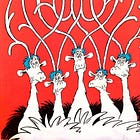



Phillips was part of the "Family Values" crusade, so, logically, he is incapable of creating unbiased, coherent commentary on his subject. Of the books I looked at for writing my own "America 'Toons In", I found this book, and other, similar ones, to be, entirely, inflammatory pieces designed to cripple the American animation industry (Of course, he failed to do that...).
Laughed out loud multiple times at this. Well done.